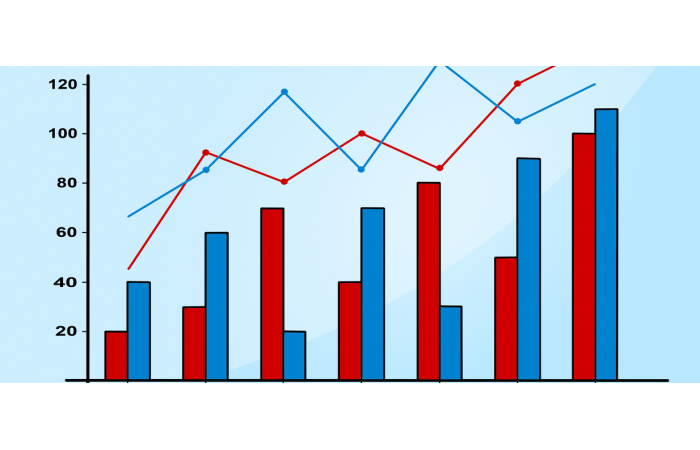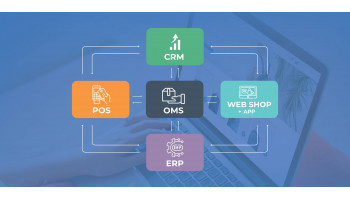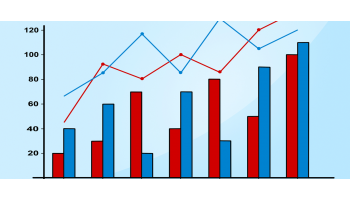Following the exponential growth in the eCommerce industry and the boom of online shopping during the global COVID-19 pandemic, the eCommerce sector is facing numerous challenges in 2023. Small businesses find it hard to compete and maintain their position in an online market filled with giants offering low prices, fast delivery, and favourable refund policies.
Here are the 5 biggest challenges online stores are facing:
- Low Conversion Rates: One of the most common issues web stores face is low conversion rates. This means that visitors to the website aren't taking the desired actions, such as making purchases or signing up for newsletters. The causes of this problem can vary, from poor website design to complicated checkout processes or inadequate navigation.
- Poor Inventory Management: Inadequate inventory management can pose a significant problem for web stores. Insufficient stock can lead to loss of customer interest and negatively impact the store's reputation. On the other hand, excess inventory can result in product obsolescence or unnecessary storage costs.
- Delivery Challenges: Timely product delivery to customers is a crucial factor in the success of web stores. Delivery issues, such as delivery delays, product damage during transit, or lost shipments, can lead to a poor customer experience and result in a negative store reputation.
- Inadequate Customer Support: Customers expect quality customer support that promptly responds to their inquiries and resolves any issues. Undertrained customer support agents, slow response times, or failure to provide adequate solutions lead to customer dissatisfaction. In such cases, customers often turn to competitors and hesitate to make purchases through your webshop. Quality support that assists in the purchasing process, delivery, and handling of complaints is crucial for ensuring a satisfactory customer experience and positively impacting all other indicators of successful online business.
- Data Security: Protecting personal and financial information is imperative for every merchant. Inadequate security mechanisms and insufficient protection of customer data can lead to identity theft, and financial fraud, and certainly cause customer distrust, resulting in a loss of the online store's credibility.
These challenges often co-occur, both with each other and with other issues, causing a poor customer experience that directly affects revenue reduction and the store's negative reputation. Analysing and optimising these processes and functionalities is crucial for the sustainability and improvement of business. It's up to merchants to take all necessary steps to enhance the customer experience on their web store because a satisfied customer is the best business strategy.
Here are 5 most effective techniques to address all these challenges that you can implement on your webshop.
Low Conversion Rates
Low conversion is one of the biggest challenges faced by online businesses. Fortunately, there are various methods to increase conversion rates in online stores, primarily focusing on optimising the entire purchasing process in each domain individually. Here are a few things you can implement to boost conversions:

- Enhancing user experience is crucial as poor user experience often leads to low conversion rates. Web store owners can improve user experience by ensuring faster page loading, easy website navigation, attractive and modern design, and a secure checkout process. A clean and clear shopping cart is essential for a good user experience as it provides a sense of transparency and security during purchase.
- Optimise the purchasing process - Complicated purchasing processes present a significant barrier to customers who want to complete a purchase. It's up to retailers to make the purchasing process on their online store as simple and fast as possible. This can be achieved by adding options for guest checkout or automatic address completion.
- Clear Call to Action (CTA) - A clear and precise call to action significantly contributes to increased conversions. It is necessary to use a CTA that is clear, visible, and unambiguously directs website visitors to the desired activity, such as purchasing, registering, or signing up for a newsletter.
- Accessible product information - To make a purchase decision, customers want to learn as much as possible about the products and services. It is necessary to provide detailed product descriptions and specifications, as well as high-quality product images. Product reviews and word-of-mouth recommendations from other customers most often encourage a purchase. Data from 2021 show that almost 70% of customers read up to 6 reviews before making a purchase.
- Limited offers and discounts Strategy - Limited-time offers among customers create a sense of urgency and make it easier for them to make a purchase decision.
- Remarketing - Remarketing is one of the most important strategies in marketing activities. It involves continuously targeting customers who have already visited a webshop or searched for specific products but have not completed a purchase. Remarketing can be done through social media, email, or advertising campaigns on other websites.
All of these strategies are generally applicable to any online store. It is up to the merchants to create a long-term plan, test methods, and assess the effects on their business.
Poor Inventory Management
Inventory management can be a major challenge for web stores. Several techniques can help you address the issue and improve inventory management:

- Sales data analysis - Analysing historical sales data can help predict demand for specific products. Retailers can use data analysis tools to gain insight into demand trends and plan product stocks accordingly.
- Just in Time (JIT) method - This method involves products arriving at the web store's warehouse just before they are needed for delivery. This method helps reduce inventory and storage costs.
- Automated inventory management - Automation of inventory management can help web stores monitor and maintain optimal inventory levels. The system can be set up to send alerts when inventory levels drop below a certain level and to place orders to replenish inventory automatically.
- Improving supplier collaboration - Suppliers play a key role in effective inventory management. Retailers should establish strong partnerships with their suppliers to ensure fast and reliable product delivery. In addition, negotiating benefits, such as lower prices or greater discounts for larger quantities, can help optimise costs and inventory management.
- Real-time inventory tracking - Real-time inventory tracking allows retailers to know which products are currently available and how quickly a particular product is selling at any given time. This is especially useful for seasonal products or currently trending products.
Inventory management is an extremely complex process and requires careful planning and continuous monitoring. Implementing the above techniques can help you solve and prevent inventory management issues and optimise your business.
Delivery
Delivery is a key part of the web store business process. Inefficient, delayed delivery and lack of information can lead to customer dissatisfaction and negatively impact your reputation. Several strategies can help you in solving delivery issues:

- Choosing a reliable delivery partner - Choosing a reliable delivery partner is crucial for the successful operation of a web store. Explore all delivery options available on the market, such as courier services, postal services, or providing delivery with your resources. Evaluate the quality of service, speed, and delivery costs to choose the best option for your business.
- Clear and transparent communication - Clear and precise communication with customers greatly contributes to preventing delivery issues. Web stores can inform customers about the expected delivery time or any possible delays. Additionally, there are shipment tracking functionalities to allow customers to know the status of their orders at any time.
- Optimising packing and delivery processes - Optimising packaging and delivery processes is one of the things you can do to improve your business. It is important to use appropriate packaging tailored to the products you are sending, as well as proper package labelling to minimise delivery errors.
- Monitoring courier service performance - Monitoring carrier performance can help retailers identify potential delivery issues and resolve them before they negatively impact customers. Retailers are advised to analyse data on average delivery time, delivery delays, and any damages, which provide clear insight into the performance and efficiency of carriers and the possibility of timely intervention.
- Offering diverse delivery options - Different delivery options can help web stores meet the needs of different customers. For example, customers who need their products to be delivered swiftly can opt for express delivery, while some customers can opt for cheaper delivery options.
All of these strategies can be very effective and improve the overall customer experience. It is necessary to find the best model for their application and adapt them to the specific needs of your business.
Poor Customer Support
There are several ways to address the challenges that arise in the process of providing customer support:
- Be transparent and provide detailed information to your customers. Offering clear and detailed information about products, delivery, payment, and returns can help customers to self-inform and resolve their issues. Provide detailed instructions and answers to frequently asked questions on your website or offer an online chat option so that customers can ask additional questions and receive quick answers.
- Quick responses and efficient resolution of customer issues can enhance their experience and establish trust and loyalty to your brand. Support team education is very important, which will affect the accuracy and speed of responding to customers.
- Customer support through various channels is one way to approach customers. Be present on all communication channels, including email, phone calls, and online chat, and allow customers to choose the method of communication they prefer.
- Implementing issue-tracking systems helps merchants identify common problems in their business. This approach helps identify the root causes of the problems and their resolution.
- Monitoring the performance of support teams is a method that can significantly impact the customer experience. The process includes tracking response times to customer inquiries, the number of issues resolved, and customer feedback on the quality of customer support.
Data Security
Data security is crucial for establishing customer trust in an online store. According to recent research, as many as 74% of respondents have expressed extreme concern about data security when making purchases online. Security breaches in data storage and privacy seriously undermine trust and impact the store's reputation negatively. There are several ways to protect your customers:

- Use security protocols such as HTTPS, SSL, or TLS to ensure a secure connection between the client and the server. These protocols use encryption to prevent the disclosure of sensitive data.
- Protect your customers' payment card data by using secure methods for data collection and processing, such as PCI DSS standards. These measures include data encryption, access restrictions, and regular security checks.
- Regular software updates can help maintain data security. Online stores should operate using up-to-date operating systems, databases, servers, as well as antivirus software. This reduces the risk and vulnerability to cyber-attacks.
- Monitoring activity and identifying threats help detect irregularities and fraud. Web shops can use data analysis tools to identify unusual behaviour patterns, such as frequent transactions from the same IP address or different countries.
- Employee education is crucial in the data preservation process. Employees can be a weak link in the security chain, so they need to be trained in properly handling sensitive data and recognising threats.
These strategies have proven to be very effective, and their implementation can help optimise processes in your business and provide a pleasing customer experience. After all, it all comes down to one goal - customer satisfaction, because a satisfied customer is your best advertisement.











.png)
.png)
.png)
.png)



.png)

.png)
.png)

